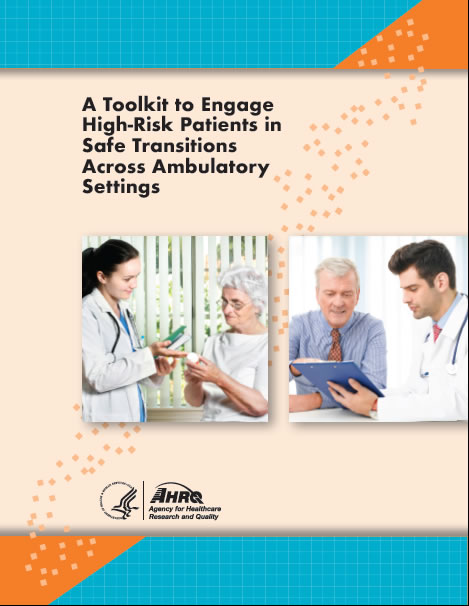Toolkit to Engage High-Risk Patients In Safe Transitions Across Ambulatory Settings
The Toolkit to Engage High-Risk Patients in Safe Transitions Across Ambulatory Settings (PDF, 1.36 MB) includes a:
- Toolkit guide, called Guide for Safe Patient Transitions to New Appointments, with in-depth instructions on how to use the toolkit, which also includes useful resources (PDF, 1.48 MB).
- Narrated PowerPoint slide deck for team training (PPT, 1 MB; HTML).
- Pre-Intervention Assessment, a step-by-step exercise in an Excel format for team members to identify safety gaps or areas for improvement (Excel, 211.23 KB).
- Checklist to Prepare Patients for New Appointments, a set of best practices team members should follow with every patient (PDF, 253.24 KB).
- Appointment Aide, a tool for patients to refer to and use at their current appointment, and take with them to their follow-up appointments (PDF, 1.29 MB).
Background and Final Report

The Health Research & Educational Trust (HRET) adapted select, evidence-based patient and care partner-centered acute care discharge tools to create a toolkit specifically for use in the ambulatory care setting. The toolkit is designed to help staff actively engage patients and their care partners to prevent errors during transitions of care.
Toolkit materials were field tested in two facilities, one a rural setting and one in an urban environment. Qualitative analysis of interviews with nine staff members was completed to better understand how materials were implemented, the effectiveness of support materials, barriers to and facilitators of implementation, and lessons learned from implementation.
The patient and clinician tools were revised based on the results of the pilot testing. Key changes were designed to facilitate adaptation and use in existing or new ambulatory care workflows. The findings for this project frame the opportunities and challenges in engaging patients and their care partners as active participants in preventing harm during transitions of care. Further study is needed to evaluate the impact of the tools and resources on quality and patient safety outcomes and patient and clinician experiences
Details of the toolkit’s development are in the Final Report (Word, 195 KB).



